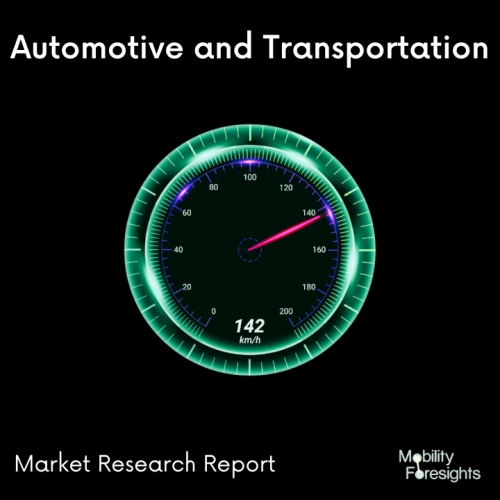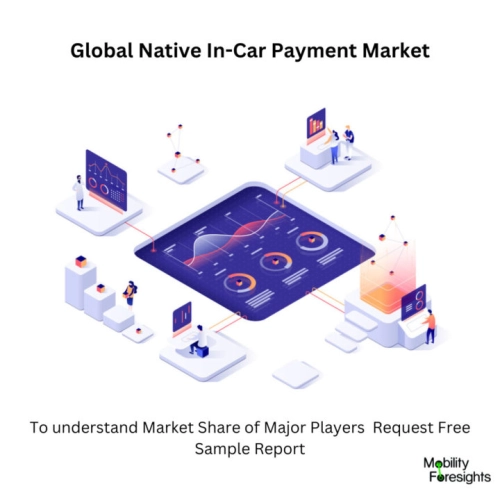
- Get in Touch with Us

Last Updated: Apr 25, 2025 | Study Period: 2024-2030
The ability to make payments directly through a car's infotainment system is referred to as native in-car payment. Drivers can use this feature to make purchases like gas, parking, and meals without getting out of their car.
Drivers can start transactions with native in-car payment using the touchscreen or voice commands in their car. Credit cards, mobile wallets, and even biometric authentication are just a few of the ways that the payment might be completed.
The popularity of native in-car payments is rising as more vehicles are outfitted with connected technologies. In addition to making driving more convenient, this function creates new revenue opportunities for companies that collaborate with automakers to provide this service.

Global native in-car payment market accounted for $XX Billion in 2023 and is anticipated to reach $XX Billion by 2030, registering a CAGR of XX% from 2024 to 2030.
In spring Mercedes-Benz and Visa will collaborate to introduce native in-car payments in the UK and Germany, with further European markets to follow The car's fingerprint sensor will authorize payments, and purchases can be done straight through the head unit or MBUX.
The future all-electric Hyundai Ionic 5 crossover will feature an in-car payment system that will enable users to locate and pay for EV charging, meals, and parking.
The spread of software-centric technical innovations like in-vehicle payment options has been expedited by the pandemic. Fuel in-dash payment is currently the most popular application, accounting for 48% of all in-dash payment transactions. The possibility to pay from major petroleum companies like Shell Oil is already available.
A brand-new digital payment service called Mercedes pay+ has already been introduced by Mercedes-Benz and may be used directly inside of its vehicles.
A fingerprint sensor integrated into a few Mercedes-Benz vehicles enables and authorizes the payments made through the service. The actual solution makes use of the Delegated Authentication and Cloud Token Framework from Visa.
By connecting their card to their Mercedes me user account and turning on pay+ in the vehicle, cardholders with a qualifying Visa credit or debit card and a suitable vehicle can enable native Mercedes pay+.
| Sl no | Topic |
| 1 | Market Segmentation |
| 2 | Scope of the report |
| 3 | Abbreviations |
| 4 | Research Methodology |
| 5 | Executive Summary |
| 6 | Introduction |
| 7 | Insights from Industry stakeholders |
| 8 | Cost breakdown of Product by sub-components and average profit margin |
| 9 | Disruptive innovation in the Industry |
| 10 | Technology trends in the Industry |
| 11 | Consumer trends in the industry |
| 12 | Recent Production Milestones |
| 13 | Component Manufacturing in US, EU and China |
| 14 | COVID-19 impact on overall market |
| 15 | COVID-19 impact on Production of components |
| 16 | COVID-19 impact on Point of sale |
| 17 | Market Segmentation, Dynamics and Forecast by Geography, 2024-2030 |
| 18 | Market Segmentation, Dynamics and Forecast by Product Type, 2024-2030 |
| 19 | Market Segmentation, Dynamics and Forecast by Application, 2024-2030 |
| 20 | Market Segmentation, Dynamics and Forecast by End use, 2024-2030 |
| 21 | Product installation rate by OEM, 2023 |
| 22 | Incline/Decline in Average B-2-B selling price in past 5 years |
| 23 | Competition from substitute products |
| 24 | Gross margin and average profitability of suppliers |
| 25 | New product development in past 12 months |
| 26 | M&A in past 12 months |
| 27 | Growth strategy of leading players |
| 28 | Market share of vendors, 2023 |
| 29 | Company Profiles |
| 30 | Unmet needs and opportunity for new suppliers |
| 31 | Conclusion |
| 32 | Appendix |